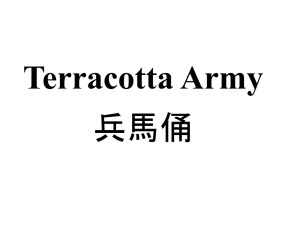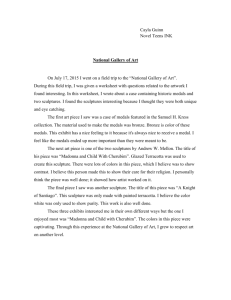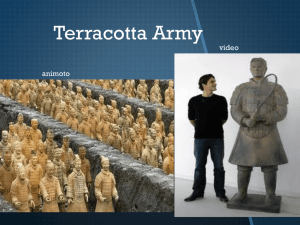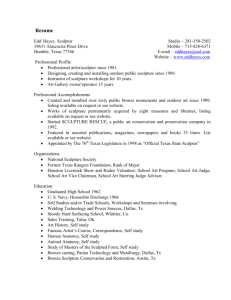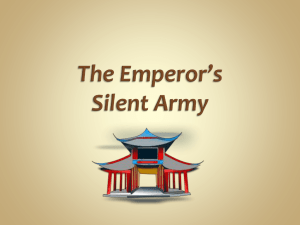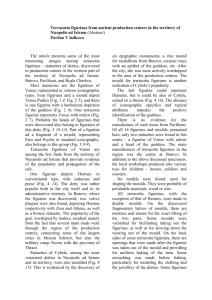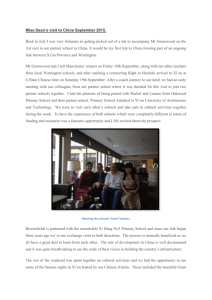CSA-Sculpture
advertisement
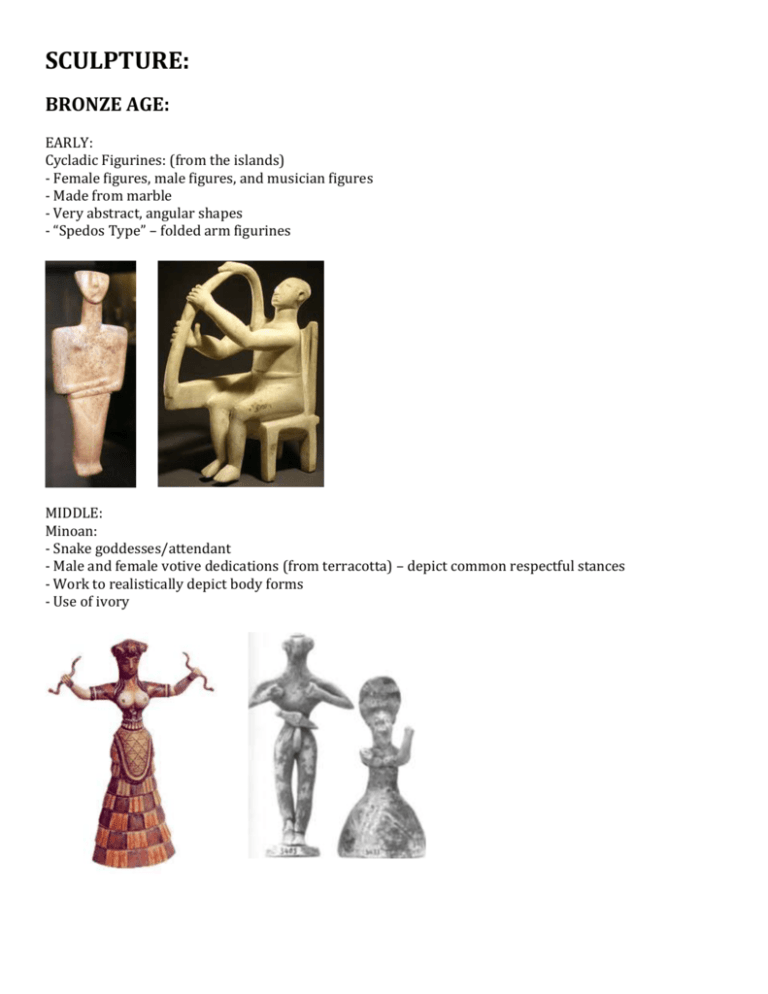
SCULPTURE: BRONZE AGE: EARLY: Cycladic Figurines: (from the islands) - Female figures, male figures, and musician figures - Made from marble - Very abstract, angular shapes - “Spedos Type” – folded arm figurines MIDDLE: Minoan: - Snake goddesses/attendant - Male and female votive dedications (from terracotta) – depict common respectful stances - Work to realistically depict body forms - Use of ivory LATE: Minoan: - Female terracotta goddess figures – partially wheel made! Helladic: - Phi and Psi figurines, terracotta – distinctly Mycenaean GEOMETRIC AGE: - Terracotta still used, also bronze - Animal and hybrid figures more common, still in shrines - Human warrior figures are more popular - Use of ivory - Angled features – geometric style ORIENTALIZING PERIOD: - Still the warrior type - Bronze becomes more valuable/prized (terracotta still used) - Anatomy discussed in geometric terms – but becoming more realistic - Daedalic figures: triangular face, low forehead, big eyes and nose, flat skull, stylized hair - Interest in creating more life-size figures: Influence from the Egyptians!! - Very two dimensional ARCHAIC: - Introduction of architectural sculpture, grand scale - Pediments, metopes, friezes, acroteria - Done in relief - More life size figures: Kouroi and Korai - Very stylized – influenced from the East - Become more naturalistic - Male nude, clothed female - Kouros: left leg forward, arms by the side, archaic smile, bulging eyes, stylized (long!) hair, - Korai: trouble rendering natural drape folds and body under the cloth SEVERE STYLE: - Architectural sculpture (grand scale) - Friezes/Metopes becoming higher relief, more interesting/difficult poses of figures - In the Round: - Preferred material is bronze - Contrapposto - Big chin, flat cheeks, thick eyelids, and a composed expression, rolled hair - Realism in depiction of cloth and its relationship to the body - Idealized body type HIGH CLASSICAL: - Wet style drapery – Parthenon - Layering of figures in friezes and metopes, much more crowded - Experimentation with different poses LATE CLASSICAL: - Move toward more naturalistic representation of the human figure - Growing interest in showing emotion, character, age, mood - Relationship with surrounding space (extended hand) - Realistic relationship between cloth and body - Nude female! HELLENISTIC: (300BC - ) - Diversity in form and psychological presentation - Realism, variety, and diversity - Human experience and expression - Personification and allegory
